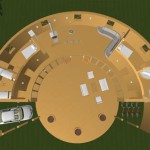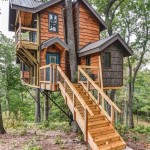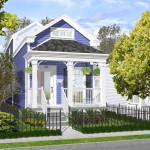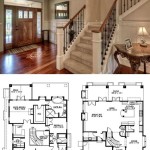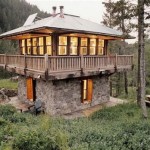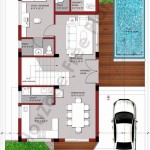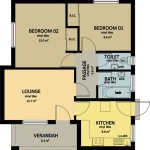Traditional Craftsman House Plans: A Timeless Appeal
Traditional Craftsman house plans continue to capture the hearts of homeowners with their enduring charm and emphasis on handcrafted details. This architectural style, born in the early 20th century as a reaction against the ornate Victorian era, champions simplicity, functionality, and the beauty of natural materials. Understanding the core elements of Craftsman design allows prospective homeowners to select plans that truly embody this beloved aesthetic.
One of the defining features of Craftsman homes is their low-pitched rooflines, often gabled or hipped, with wide overhanging eaves. These prominent eaves serve both a practical and aesthetic purpose, protecting the home's exterior and creating a sense of shelter and warmth. Exposed rafter tails and decorative brackets further enhance the visual appeal and contribute to the handcrafted look.
The exterior of a Craftsman home typically features a mix of natural materials, including wood, stone, and brick. Siding is often comprised of wood shingles or clapboard, emphasizing the horizontal lines of the structure. Stone or brick is commonly used for foundations, chimneys, and porch pillars, adding a touch of rustic elegance. The color palettes tend to be earthy and muted, reflecting the natural surroundings.
Front porches are a hallmark of Craftsman architecture, serving as a welcoming transition between the indoors and outdoors. These porches are typically covered by the extended roofline and feature tapered columns or pillars, often resting on substantial bases. Built-in seating and other details create a comfortable and inviting space for relaxation and socializing.
Emphasis on handcrafted details is paramount in Craftsman design. These details can be seen in the prominent use of exposed beams, both inside and out, as well as the incorporation of decorative brackets, intricate woodwork, and built-in cabinetry. The focus on craftsmanship elevates the home beyond mere shelter and transforms it into a work of art.
Inside a Craftsman home, the emphasis on natural materials continues. Wood flooring, often oak or pine, is a staple, contributing to the warm and inviting atmosphere. Fireplaces, frequently constructed of brick or stone, serve as a focal point in the living area, adding to the home's cozy ambiance. Built-in bookshelves, window seats, and other custom features further enhance the functionality and charm of the interior spaces.
Open floor plans are a common characteristic of Craftsman homes, particularly in more modern interpretations of the style. While retaining distinct living areas, the open layout promotes a sense of connection and flow between spaces. This design feature also allows for abundant natural light to penetrate the interior, creating a bright and airy environment.
Windows play a crucial role in Craftsman architecture, contributing to both the aesthetic and the functionality of the home. Multi-paned windows, often arranged in groups of two or three, are a signature element. These windows not only add visual interest but also maximize natural light and ventilation. Casement windows, which open outward on hinges, are another popular choice, adding to the home's distinctive charm.
Choosing the right Craftsman house plan requires careful consideration of various factors, including lot size, lifestyle needs, and budget. Prospective homeowners should examine the floor plans carefully, paying attention to the layout, room sizes, and the inclusion of desired features such as a home office, a finished basement, or a detached garage. Consulting with an architect or builder can provide valuable insights and ensure that the chosen plan meets specific requirements.
The enduring popularity of Craftsman house plans speaks to their timeless appeal. The combination of handcrafted details, natural materials, and functional design creates homes that are both beautiful and practical. By understanding the key elements of Craftsman architecture, homeowners can select plans that embody the true spirit of this beloved style, creating a home that is both aesthetically pleasing and a reflection of their personal values.
Variations within the Craftsman style allow for further customization and personalization. Bungalows, a popular subtype of Craftsman homes, are characterized by their single-story design and compact footprint. Larger Craftsman homes may incorporate two or more stories, often featuring dormers and other architectural details that add visual interest. Understanding these variations allows homeowners to choose a plan that best suits their individual needs and preferences.
Ultimately, the selection of a Craftsman house plan is a deeply personal decision. By carefully considering the various elements of the style and working closely with professionals, prospective homeowners can build a home that embodies the timeless beauty and enduring appeal of Craftsman architecture for generations to come.

Traditional Style With 3 Bed 2 Bath Car Garage House Plans Dream Craftsman

1922 Craftsman Style Bunglow House Plan No L 114 E W Stillwell Co Bungalow Floor Plans

Classic 1918 Craftsman Style Bungalow Design Shingled Cottage House Plans

House Plan 73147 Traditional Style With 2346 Sq Ft 3 Bed 1 Ba

350 Vintage House Plans Ideas

House Plan 42505 Traditional Style With 1918 Sq Ft 2 Bed 1 Ba

Traditional House Plans With Fresh Twists Houseplans Blog Com

1925 26 C L Bowes House Plans Craftsman Bungalow Vintage

Craftsman House Plans Home Floor Monster

Craftsman House Plan

